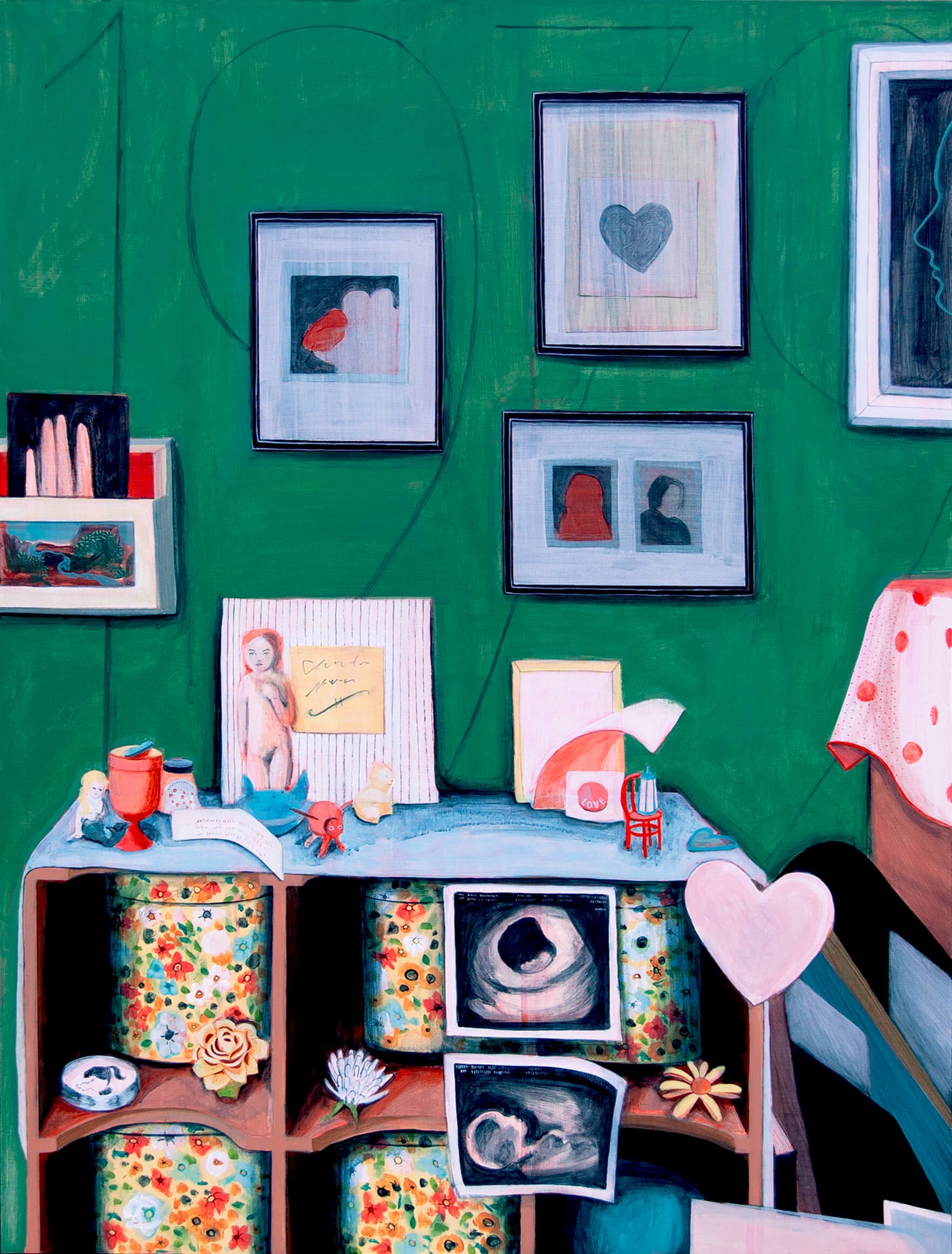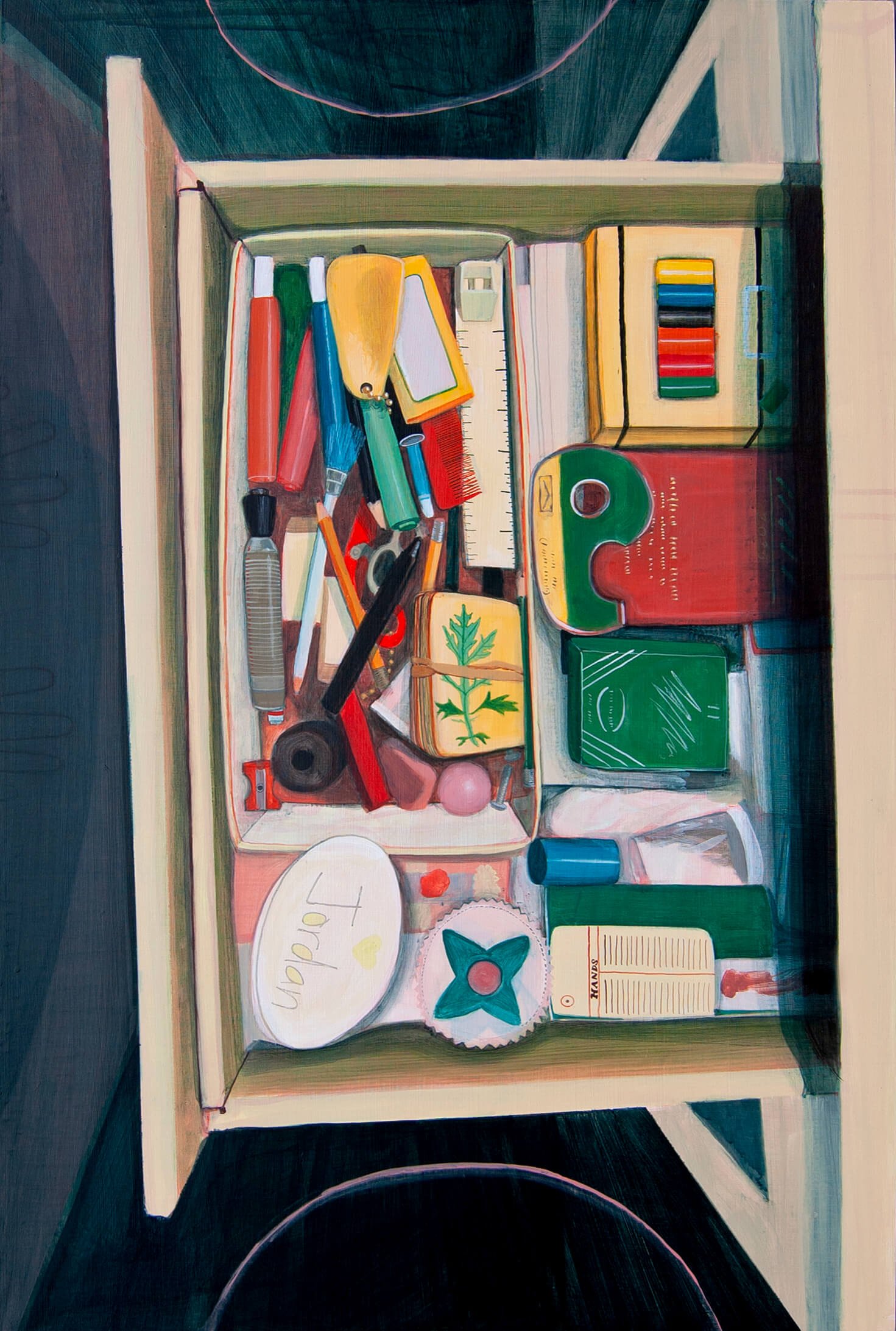Jordan Buschur
Jordan Buschur is an artist, educator, and curator based in Toledo, Ohio. Buschur received an M.F.A. in Painting from Brooklyn College, City University of New York. Her work has been exhibited in numerous venues, including the Urban Institute for Contemporary Arts (Grand Rapids, MI), the Center for Book Arts (NY), and Field Projects (NY). She has participated in residencies at the Wassaic Project, Chashama North, the Kimmel Harding Nelson Center for the Arts, and the Vermont Studio Center. Awards include the Ohio Arts Council Individual Excellence Award, the Kimmel Foundation Artist Award, and the Charles Shaw Painting Award. Her work has been featured in print in New American Paintings and UPPERCASE Magazine, as well as online on The Jealous Curator, Young Space, and BOOOOOOOM, among others. Buschur is a co-founder of Co-Worker Gallery and has curated exhibitions at Cuchifritos Gallery, Spring/Break Art Show, and the Neon Heater. She currently teaches drawing at the University of Toledo.
Artist Statement
My paintings and drawings imply a human presence through depictions of accumulated collections. The contents of desk drawers, stacks of books, packed boxes, and objects on display are united by systems of value shaped by mystery, sentimentality, and matriarchal connection.
Each piece focuses on the oscillation between personal resonance and public view, reality and invention, fixed meaning and open interpretation. I’m interested in the assignment of non-monetary significance onto objects as an inherently interior and idiosyncratic act. In this way, the paintings are portraits as I meditate on the details (both mundane and magical) of the accumulated stuff of friends and family. Simultaneously, the collections point toward the material weight of modern life, the anxiety of consumption, and the endgame of anonymous personal effects. Looking through the lens of inheritance, accumulations of sentimental objects can link to ancestors while also becoming a burden of junk. A well-loved thing, so deeply felt by one, shapeshifts in meaning when passed to a new owner and generation.
www.jordanbuschur.com
How has the environment you grew up in affected your art practice?
It was such a gift that my parents never questioned the value of artistic pursuits, and I was supported in my interest in studying music when I was young. That led me to a summer arts camp, where I saw the visual arts classes from my place in the choir and jumped ship. I’ve been painting ever since.
If your artwork was a mirror, what would it reflect?
Here is a drawer, open it. Here is a box, dig through. Here are my great-grandmother’s display cabinets, my grandparents' basement storage shelves, my mom’s collections. Here is my room and the objects I keep. I’m looking at non-monetary value systems, full of sentimentality, hidden stories, and the weight of ancestral inheritance.
What is the most difficult part (or your least favorite part) of your process?
Lately, I’ve been working on a series of large and complex pieces, and each one feels like climbing a mountain. Through the long middle stretch, it can be overwhelming and hard to stay engaged. The looming question is always: when will I get there? But eventually, with enough chipping away, the end is within reach. That point is so exciting and joyful; it makes the whole process worth it.
Pursuing ‘artist’ as a career is not for the faint of heart. What is the most rewarding aspect of this pursuit?
There are so many ways to build a life as an artist, but no single clearly defined path. That fits me well: a bit headstrong, a bit rebellious, always seeking a place that feels true to me. And fortunately, many other artists are that way too. Finding a community of artists on parallel paths is so fulfilling.
If your art is in a lineage of artists working within similar veins, who would be part of your lineage and why?
Years ago, I found the catalog for a 1994 group show at the New Museum, Bad Girls, that included Portia Munson’s Pink Project. It felt like the perfect mash-up of thrift store aesthetics meeting criticism of throw-away culture crossed with gender role trouble. Her work still resonates with me today: the excess, the hidden stories, the rebellion.





